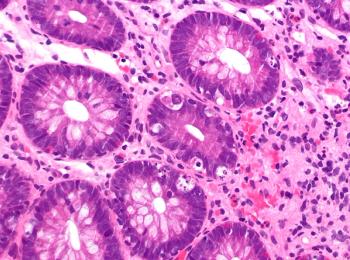
New Guidelines Proposed for Preventing and Treating CAR T-Cell Side Effects
A team of investigators from multiple institutions has proposed new guidelines for monitoring, grading, and managing the side effects of CAR T-cell therapy.
A team of clinicians is proposing new guidelines for systematically dealing with the toxicities of chimeric antigen receptor (CAR) T-cell therapy. In an article published in
The group that proposed these guidelines, the CAR T-cell-therapy-associated TOXicity (CARTOX) Working Group, includes investigators from multiple institutions and medical disciplines. The group noted that two major side effects have emerged during clinical trials of CAR-T-cell therapy that were previously uncommon to cancer treatments. These include cytokine release syndrome (CRS), an escalated immune response that causes flu-like symptoms and CAR T-cell–related encephalopathy syndrome (CRES).
“These guidelines are easy to follow, even for physicians not previously experienced in administering this therapy. We have updated the grading system and management guidelines for CRS. We have better defined the neurotoxicity associated with this therapy as CAR T-cell related encephalopathy syndrome,” said Sattva Neelapu, MD, professor and deputy chair ad interim in the Department of Lymphoma and Myeloma at the University of Texas M.D. Anderson Cancer Center in Houston.
The published review covers wide-ranging research on CAR T-cell therapies by many institutions and includes insights based on more than 100 patients treated at M.D. Anderson, Moffitt Cancer Center in Tampa and Sylvester Cancer Center at the University of Miami in Florida, and Mayo Clinic Cancer Center in Rochester, Minnesota. Patients were treated with CAR T-cells under development at four difference companies for treating leukemias and lymphomas.
Dr. Neelapu said this treatment produced response rates ranging from 50% to 90% in clinical trials with leukemia and lymphoma patients who had failed all other treatments. He said this new approach to cancer represents a sea change in how patients are treated.
“We proposed a new grading system and management guidelines for CRES. This CRES grading is objective and quantitative and can be performed easily and rapidly by all health care providers and allows early detection of neurotoxicity. We have also provided new diagnostic criteria and management guidelines for hemophagocytic lymphohistiocytosis, a rare complication associated with this therapy,” Dr. Neelapu told OncoTherapy Network.
Both CRS and CRES are treatable with early identification. The review provides specific recommendations for pretreatment preparation, monitoring of patients during and after CAR T-cell infusion, identifying and staging emerging CRS and CRES, and tailored treatment of those side effects depending upon their severity.
“All providers involved in the care of patients receiving CAR T-cell therapy should be well versed in the grading and management of the toxicities associated with this therapy as they can be fatal if not recognized and managed promptly,” said Dr. Neelapu.
Newsletter
Stay up to date on recent advances in the multidisciplinary approach to cancer.
















































































